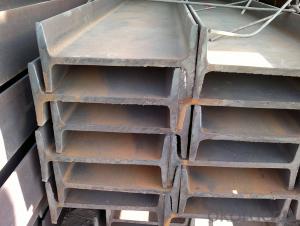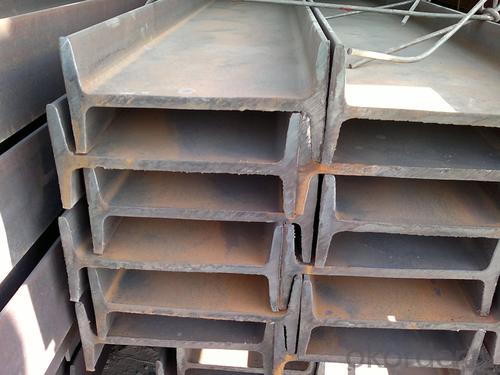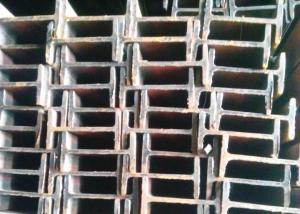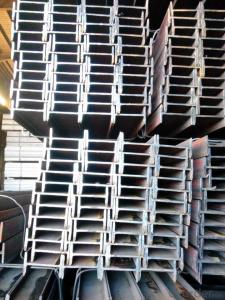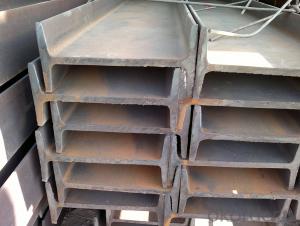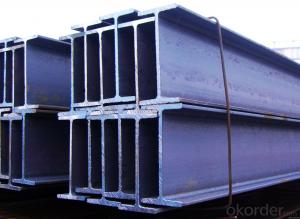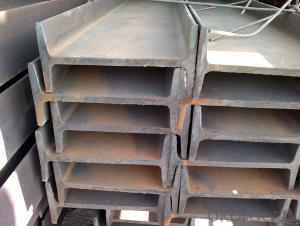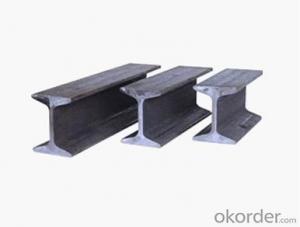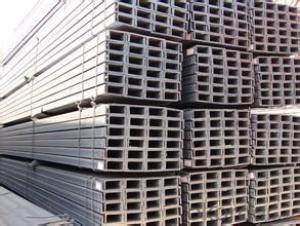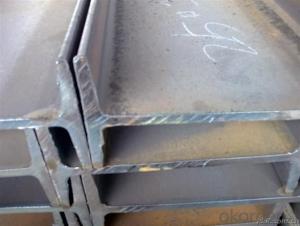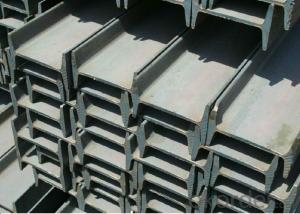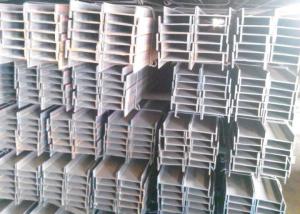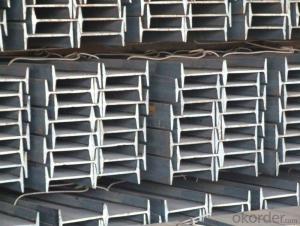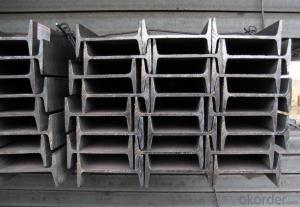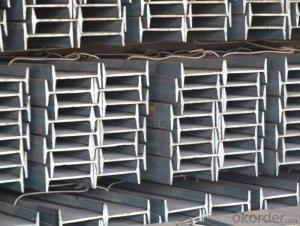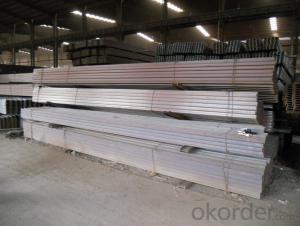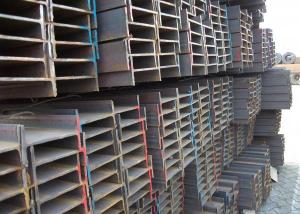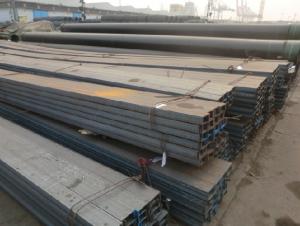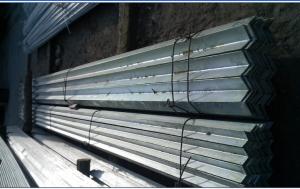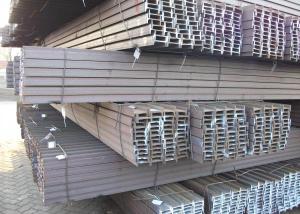Hot Rolled European Standard of I-beam
- Loading Port:
- China Main Port
- Payment Terms:
- TT or LC
- Min Order Qty:
- -
- Supply Capability:
- -
OKorder Service Pledge
OKorder Financial Service
You Might Also Like
Product Description:
OKorder is offering high quality IPEAA Beam at great prices with worldwide shipping. Our supplier is a world-class manufacturer of steel, with our products utilized the world over. OKorder annually supplies products to European, North American and Asian markets. We provide quotations within 24 hours of receiving an inquiry and guarantee competitive prices.
Product Applications:
1. structure construction and electronic tower building construction
2. bridge, trestle, autos, brackets, machinery
3.It is widely used in various building structures and engineering structures such as roof beams, bridges, transmission towers, hoisting machinery and transport machinery, ships, industrial furnaces, reaction tower, container frame and warehouse etc.
Product Advantages:
OKorder's IPEAA Beam are durable, strong, and resist corrosion.
Main Product Features:
· Premium quality
· Prompt delivery & seaworthy packing (30 days after receiving deposit)
· Corrosion resistance
· Can be recycled and reused
· Mill test certification
· Professional Service
· Competitive pricing
Product Specifications:
1.Standard: EN10025, GB Standard
Section | Standard Sectional Dimensions(mm) | ||||
| h | b | s | t | Mass Kg/m |
IPE80 | 80 | 46 | 3.80 | 5.20 | 6.00 |
IPE100 | 100 | 55 | 4.10 | 5.70 | 8.10 |
IPE120 | 120 | 64 | 4.80 | 6.30 | 10.40 |
IPE140 | 140 | 73 | 4.70 | 6.90 | 12.90 |
IPE160 | 160 | 82 | 5.00 | 7.40 | 15.80 |
IPE180 | 180 | 91 | 5.30 | 8.00 | 18.80 |
IPE200 | 200 | 100 | 5.60 | 8.50 | 22.40 |
IPE220 | 220 | 110 | 5.90 | 9.20 | 26.20 |
IPE240 | 240 | 120 | 6.20 | 9.80 | 30.70 |
IPE270 | 270 | 135 | 6.60 | 10.20 | 36.10 |
IPEAA80 | 80 | 46 | 3.20 | 4.20 | 4.95 |
IPEAA100 | 100 | 55 | 3.60 | 4.50 | 6.72 |
IPEAA120 | 120 | 64 | 3.80 | 4.80 | 8.36 |
IPEAA140 | 140 | 73 | 3.80 | 5.20 | 10.05 |
IPEAA160 | 160 | 82 | 4.00 | 5.60 | 12.31 |
IPEAA180 | 180 | 91 | 4.30 | 6.50 | 15.40 |
IPEAA200 | 200 | 100 | 4.50 | 6.70 | 17.95 |
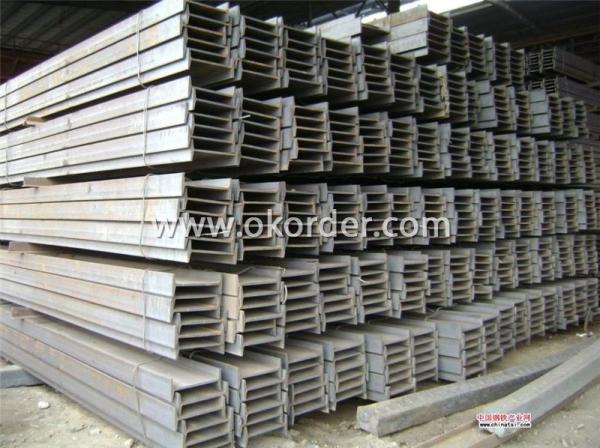
Package & Delivery Terms of IPEAA Beam
1. Packing: it is nude packed in bundles by steel wire rod
2. Bundle weight: not more than 3.5MT for bulk vessel; less than 3 MT for container load
3. Marks:
Color marking: There will be color marking on both end of the bundle for the cargo delivered by bulk vessel. That makes it easily to distinguish at the destination port.
Tag mark: there will be tag mark tied up on the bundles. The information usually including supplier logo and name, product name, made in China, shipping marks and other information request by the customer.
If loading by container the marking is not needed, but we will prepare it as customer request.
4. All the IPEAA Beams will be delivered to the port of Tianjin within 45 days after receiving the Original L/C at sight or the advance payment by T/T.
5. Transportation: the goods are delivered by truck from mill to loading port, the maximum quantity can be loaded is around 40MTs by each truck. If the order quantity cannot reach the full truck loaded, the transportation cost per ton will be little higher than full load.
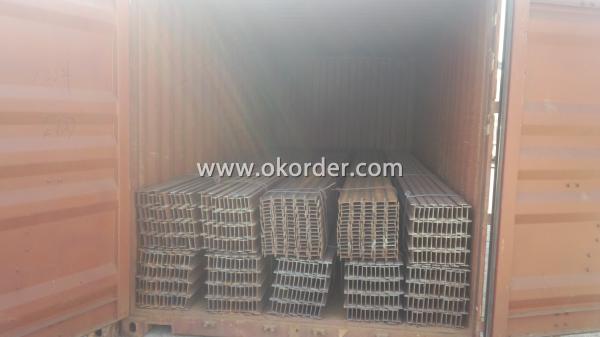
Production Flow of IPEAA Beam
Material prepare (billet) —heat up—rough rolling—precision rolling—cooling—packing—storage and transportation
FAQ:
Q1: Why buy Materials & Equipment from OKorder.com?
A1: All products offered byOKorder.com are carefully selected from China's most reliable manufacturing enterprises. Through its ISO certifications, OKorder.com adheres to the highest standards and a commitment to supply chain safety and customer satisfaction.
Q2: How do we guarantee the quality of our products?
A2: We have established an advanced quality management system which conducts strict quality tests at every step, from raw materials to the final product. At the same time, we provide extensive follow-up service assurances as required.
Q3: How soon can we receive the product after purchase?
A3: Within three days of placing an order, we will begin production. The specific shipping date is dependent upon international and government factors, but is typically 7 to 10 workdays.
- Q: Can steel I-beams be used for helipad construction?
- Yes, steel I-beams can be used for helipad construction. Steel I-beams are commonly used in construction due to their strength, durability, and ability to support heavy loads. They can be used as structural components for building the helipad's foundation, support columns, and landing platform, providing a sturdy and reliable structure for helicopters to land and take off safely.
- Q: Can steel I-beams be used in outdoor structures like bridges?
- Yes, steel I-beams can be used in outdoor structures like bridges. Steel is a durable and strong material that can withstand harsh weather conditions and provide the necessary strength and support required for bridges. Additionally, steel can be designed to resist corrosion, making it suitable for outdoor applications.
- Q: What are the common methods of installing steel I-beams in existing structures?
- The common methods of installing steel I-beams in existing structures include using temporary supports, removing a portion of the existing structure, placing the I-beam in position, and then securing it with bolts or welding. Another method involves using a crane to lift the I-beam into place, followed by attaching it to the existing structure using welding or bolting techniques.
- Q: How do steel I-beams perform in areas with high salinity or corrosive environments?
- Steel I-beams perform relatively well in areas with high salinity or corrosive environments due to their inherent corrosion resistance. The iron in steel naturally reacts with oxygen and moisture in the air to form iron oxide (rust), which acts as a protective barrier against further corrosion. Additionally, steel I-beams can be further protected through coatings or galvanization processes, which provide an extra layer of defense against corrosive elements. However, prolonged exposure to extreme levels of salinity or corrosive substances may eventually compromise the steel's integrity, requiring regular maintenance and inspections to ensure their long-term performance in such environments.
- Q: What are the common fabrication methods for steel I-beams?
- There are several common fabrication methods for steel I-beams. 1. Hot rolling: This is the most common method used for manufacturing steel I-beams. It involves heating a large steel billet and passing it through a series of rollers to gradually shape it into the desired I-beam profile. This method provides excellent structural integrity and dimensional accuracy. 2. Welding: Another commonly used fabrication method is welding. Steel plates or sections are cut and welded together to create the I-beam shape. This method allows for greater flexibility in customization and can be used for both small-scale and large-scale production. 3. Cold forming: In this method, steel sheets or strips are cold-rolled or cold-formed into the I-beam shape. This process involves bending and shaping the steel using press brakes or roll forming machines. Cold forming is often used for smaller or lightweight I-beams. 4. Extrusion: Extrusion is a less common method used for fabricating steel I-beams. It involves forcing molten steel through a die to create the desired I-beam shape. This method is mostly used for specialized applications where complex shapes or unique profiles are required. Overall, these fabrication methods provide a range of options for manufacturing steel I-beams, allowing for customization based on specific project requirements. Each method has its own advantages and considerations, depending on factors such as cost, production volume, and the desired properties of the final product.
- Q: What does plain cold pressing hot steel mean?
- The main task of steelmaking is to adjust the content of carbon and alloy elements in the steel to the required range according to the quality requirements of the steelmaking products, and to reduce the impurities such as P, S, H, O and N to the allowable limit. The steelmaking process is essentially an oxidation process in which excess carbon in the charge is oxidized and burned into CO gas to escape, and other Si, P and Mn are oxidized into the slag. S part enters refining slag, part produces SO2 eduction. When the composition and temperature of the molten steel reach the technological requirements, tapping can be made. In order to remove excess oxygen in the steel and to adjust the chemical composition, Deoxidizer and iron alloy or alloy elements can be added.
- Q: What does welded I-beam I400*1200*12*20 mean?
- The width of 400mm, height 1200mm, web thickness 12mm, the thickness of flange 20mm.Generally expressed as: height H * width B * web thickness t1 * wing plate thickness T2
- Q: What are the challenges in transporting and handling steel I-beams?
- Transporting and handling steel I-beams can present several challenges. Firstly, their large size and weight make it difficult to maneuver and transport them safely, requiring specialized equipment and trained personnel. Additionally, due to their shape, I-beams can be prone to tipping or rolling during transport, which increases the risk of accidents and damage to the beams themselves or surrounding structures. Furthermore, steel I-beams are susceptible to corrosion, so proper handling and storage are crucial to prevent rusting and degradation. Lastly, the cost and logistics associated with transporting and handling these heavy and bulky materials can be a significant challenge for businesses and construction projects.
- Q: How do steel I-beams contribute to the overall sustainability of a renovation project?
- Steel I-beams contribute to the overall sustainability of a renovation project in several ways. Firstly, steel is one of the most environmentally friendly materials available for construction. It is highly recyclable, and the production of steel from recycled sources requires significantly less energy compared to producing it from raw materials. Therefore, incorporating steel I-beams into a renovation project helps to reduce the demand for new steel production and minimizes the carbon footprint of the project. Secondly, steel I-beams offer exceptional strength and durability, allowing for efficient structural designs. This means that fewer materials are required to support the load, resulting in reduced overall material consumption. By using steel I-beams, a renovation project can achieve the desired structural integrity with less material waste. Furthermore, steel is known for its long lifespan and resistance to deterioration. When properly maintained, steel I-beams have a very low risk of rotting, warping, or being attacked by pests, which can be common issues in renovation projects involving other materials such as wood. This longevity ensures that the renovation will have a lasting impact, reducing the need for future repairs or replacements. Lastly, steel I-beams offer flexibility in design and construction. Their lightweight nature allows for easier transportation and installation, which can help to reduce energy consumption during the construction process. Additionally, steel structures can be easily modified or expanded in the future, providing adaptability to changing needs and minimizing the need for additional construction. In conclusion, steel I-beams contribute significantly to the overall sustainability of a renovation project. Their recyclability, strength, durability, and flexibility all play a vital role in reducing environmental impact, minimizing waste, and ensuring long-term sustainability.
- Q: Can steel I-beams be used for manufacturing plants?
- Yes, steel I-beams can be used for manufacturing plants. Steel I-beams are commonly used in the construction industry due to their high strength-to-weight ratio and versatility. They provide excellent structural support and can withstand heavy loads, making them ideal for use in manufacturing plants where heavy machinery and equipment are commonly used. Steel I-beams also offer long-term durability, as they are resistant to corrosion and can withstand harsh environmental conditions. Additionally, their ease of installation and ability to be customized to specific project requirements make steel I-beams a popular choice for manufacturing plants.
Send your message to us
Hot Rolled European Standard of I-beam
- Loading Port:
- China Main Port
- Payment Terms:
- TT or LC
- Min Order Qty:
- -
- Supply Capability:
- -
OKorder Service Pledge
OKorder Financial Service
Similar products
Hot products
Hot Searches
Related keywords
